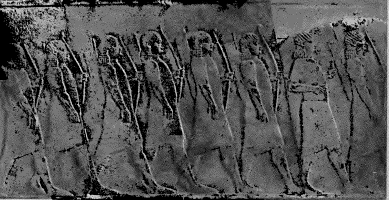<![CDATA[Archaeologists in South-East Turkey have made a discovery that throws into doubt the speed that writing superseded non-literate communication as the basis for trade. The consensus among historians is that clay tokens were used as the means of recording trade until around 3000 BC, at which point cuneiform, an early form of writing, quickly replaced it. It is assumed that at this point the use of tokens and other non-literate forms very quickly died out, with archaeological records after this point suggesting the tokens dwindled and then disappeared. The dig at Ziyaret Tepe however, has raised some interesting questions about this reading of events. Working at the site of the ancient Assyrian provincial city of Tušhan, archaeologists have unearthed a horde of 300 tokens dated to 1000 BC, two millennia after they were meant to have been rendered redundant. Tokens were used in prehistoric societies as a means of bookkeeping. Archaeologists have found evidence of their usage as far back as 8000 BC. They were simple, 3D geometric shapes such as cones, spheres and disks. Each token was basically used as a record of a commodity that had been exchanged, for example, livestock or grains. The tokens were then sealed in more clay as a record of a transaction, essentially a primitive form of contract. As the successor to the token, cuneiform is one of the earliest known systems of writing. It was a system of wedges and pictures made on a clay tablet using a blunt stylus. Archaeologists have long believed that this comparatively advanced accounting system made more primitive methods obsolete. The tokens were found in two large rooms at the back of what would have been the main administrative building in Tušhan’s lower town. It is believed these two rooms may have served as a delivery area or loading bay for the building. At the time the Assyrian empire was the largest in the world, meaning there is no way of knowing exactly what was passing through the building, and what commodities the tokens represent. Dr John MacGinnis, from Cambridge University’s MacDonald Institute for Archaeological Research, led the project in Turkey. He has suggested that the token system was used alongside cuneiform. He says that the presence of the tokens points to a sophisticated method of accountancy and administration. He said; “In fact, in a literate society there are multiple channels of recording information that can be complementary to each other. In this case both prehistoric clay tokens and cuneiform writing used together.” He speculated that tokens would have been used in the initial transactions between administrators and farmers, before the information was recorded in cuneiform later on in the process. Indeed, despite cuneiform having existed for over two thousand years, this would have been a society a long way from universal literacy. The use of both systems may have been necessary for example, to facilitate understanding between administrators and suppliers. The discovery of the tokens raise interesting questions about how quickly Assyrian society embraced literacy and writing for day to day use. It offers a valuable insight into the path of progress taken by mankind. Just as the arrival of the calculator did not herald the immediate and total disappearance of the abacus, the arrival of cuneiform did not kill off pre-literate communication methods.]]>
Pre-Literate Bookkeeping May Have Outlived Pre-Literacy
